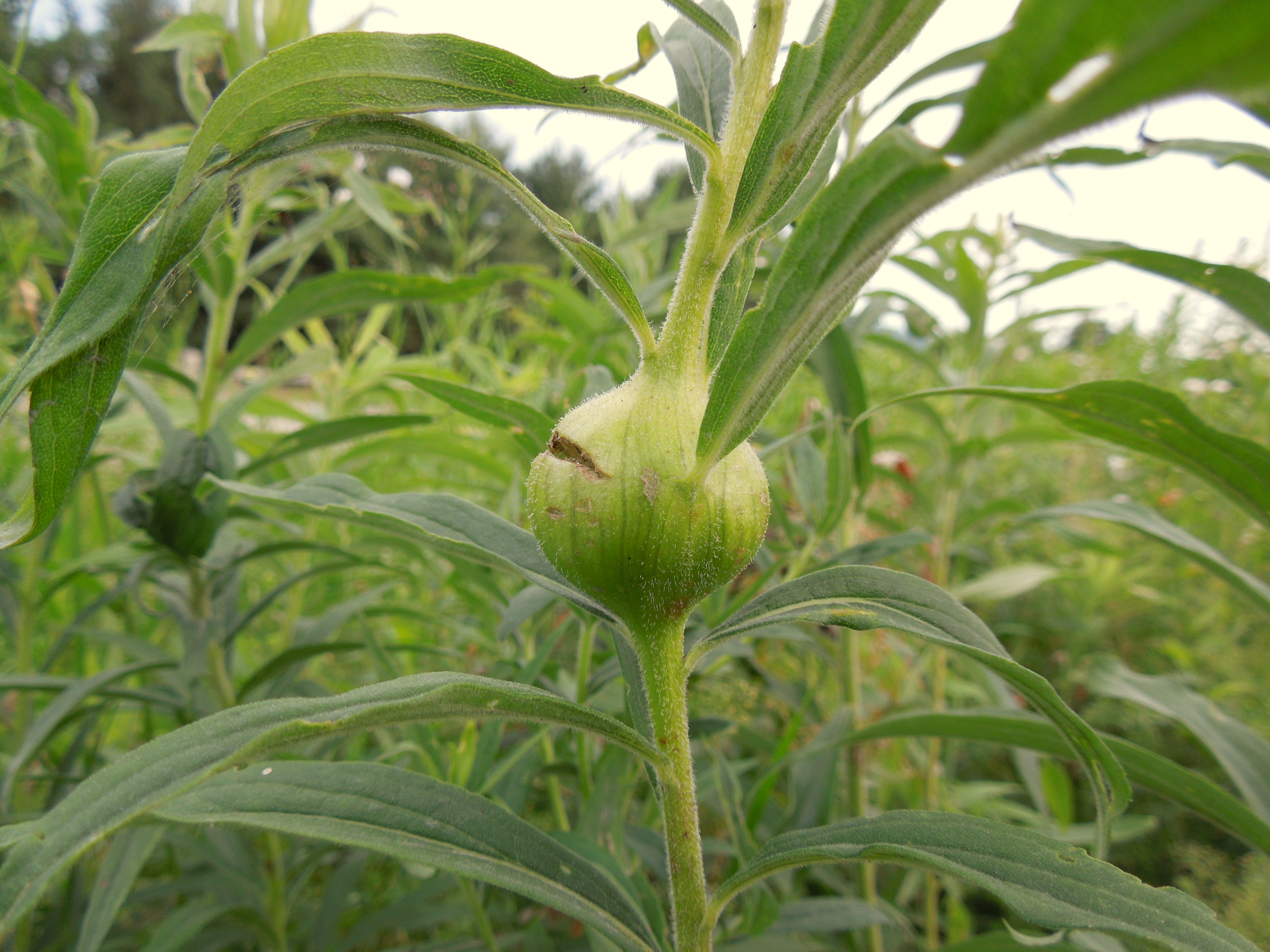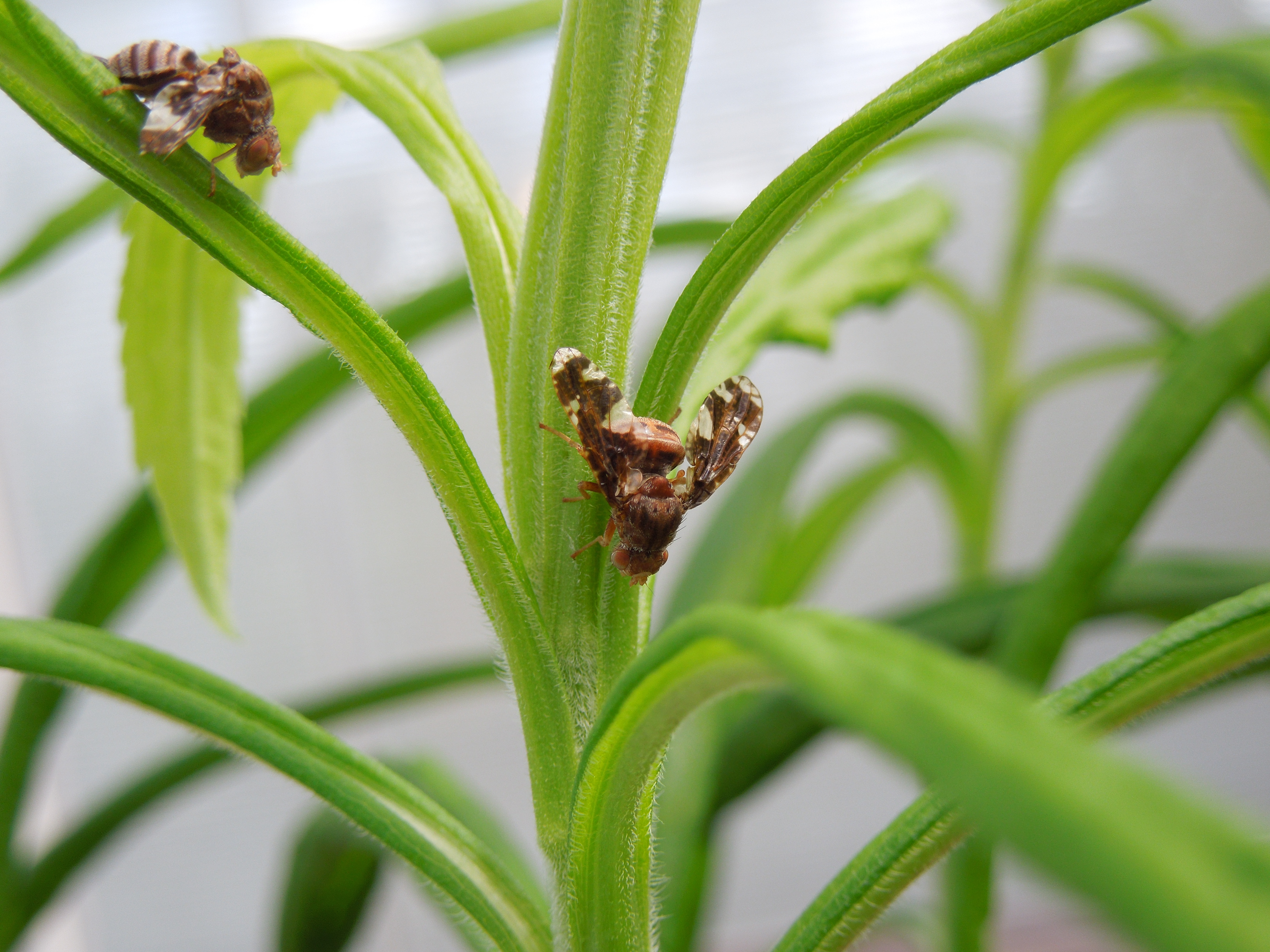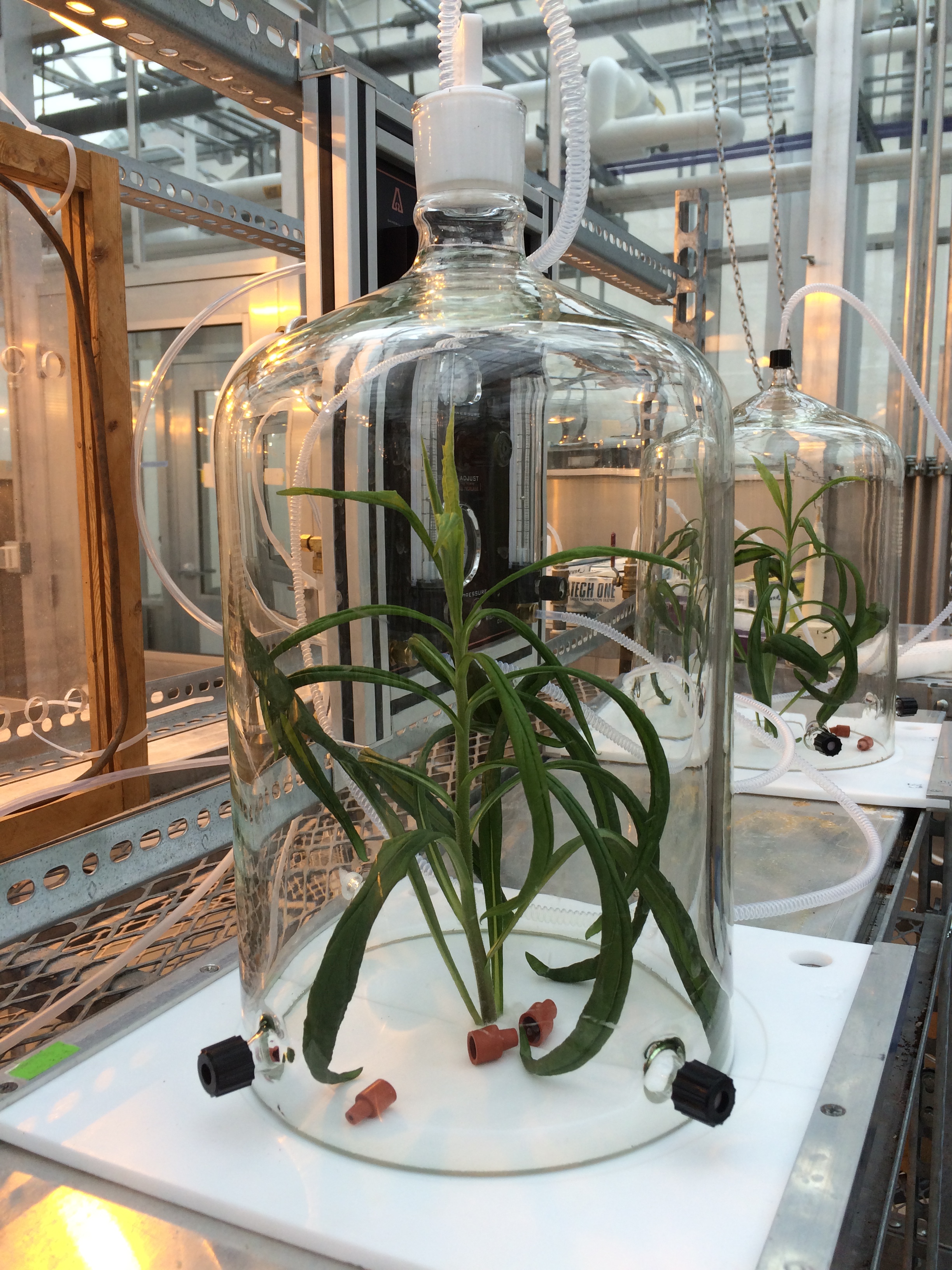Eavesdropping plants:
Plants perceive and respond to
insect pheromones
Plants in all natural systems are faced with the threat of being eaten by insects and other herbivores. To protect themselves from their herbivore attackers, plants have evolved a variety of defense strategies, including the production of defensive chemicals. Because these defenses are often costly to produce and maintain, many plants wait to induce or turn on their defenses until they are directly threatened by herbivore damage. It has been well established that insect feeding damage triggers plant defenses, however, more recent discoveries have revealed that plants not only respond to actual feeding damage, but can also tune in to environmental cues associated with the presence of insect herbivores, allowing them to prepare their defenses for future attack. Some of the cues that plants use are physical, for example, insect footsteps on leaves or the presence of insect eggs. Additionally, some plants use olfactory cues to sense the presence of nearby herbivores. Several studies have found that plants can eavesdrop on odors emitted by neighboring plants. Insect-damaged plants emit characteristic blends of volatile compounds and undamaged plants can perceive these odors and respond by enhancing their own anti-herbivore defenses. Our research has investigated whether plants can also perceive odors emitted directly by the herbivores, a possibility that was not been previously considered. Many insect herbivores communicate using pheromones, and often emit these chemical signals in proximity to their host plants, therefore we predicted that plants can eavesdrop on insect pheromones to gain a reliable cue of future herbivore damage.
Because of their long co-evolutionary history, our study focused on the plant, tall goldenrod (Solidago altissima), and its specialist, gall-inducing fly, Eurosta solidaginis. In the spring of each year, male Eurosta flies perch on the tops of goldenrod plants and emit very large quantities of pheromone to attract mates. After mating, the female fly lays her eggs in the stem of the goldenrod plant, where the developing larvae induce ball-shaped galls. These galls have been found to reduce the reproductive fitness of their host plants, indicating that goldenrod would benefit from the ability to detect the presence of the flies and induce effective defenses against the developing larvae.
To test our hypothesis that goldenrod plants can perceive the Eurosta pheromone and respond by enhancing their anti-herbivore defenses, we conducted field and laboratory experiments examining how the fly pheromone influences the defense responses of goldenrod plants. We found that goldenrod plants exposed to the fly pheromone received significantly less herbivore damage than the unexposed control plants. Damage was reduced from Eurosta flies, as well as a suite of different leaf-chewing herbivores, indicating that the exposed plants were less palatable and better defended. Next, we searched for a biochemical signature of this enhanced defense response. For this experiment, we first exposed plants to the fly pheromone or a solvent control and then measured changes in the plants’ defense chemistry while herbivores were feeding. We found that pheromone-exposed plants induced substantially higher amounts of jasmonic acid, a key defense phytohormone, and emitted greater quantities of defense-related volatile compounds following herbivore damage. Taken together, these results provide strong evidence that goldenrod plants perceived the Eurosta pheromone and responded to it by enhancing their anti-herbivore defenses.
The findings from this research have revealed a new class of volatile-mediated interactions between plants and insects as this is the first time it has been shown that plants can perceive animal-derived odors. This work has important implications for the evolutionary ecology of plant-insect interactions as it reveals a previously unknown level of complexity in signaling between plants and insects. From these results, we can conclude that olfactory communication in plants occurs more frequently than previously thought and that plants are incredible opportunists that may take advantage of a wide variety of environmental cues to help them reliably predict impending herbivory. These results also reveal that insect pheromone communication my be subject to selection pressure in the co-evolutionary arms race between plants and insect herbivores. Finally, this study system may also provide a unique opportunity for exploring the mechanisms of plant olfaction and enhancing plant defenses, which remain poorly understood.
Publications from this work:
Helms, A. M., C. M. De Moraes, A. Tröger, H. T. Alborn, W. Francke, J. F. Tooker, M. C. Mescher. Identification of an insect-produced olfactory cue that primes plant defenses. Nature Communications, in press.
Helms, A.M., De Moraes, C.M., Mescher, M.C. and Tooker, J.F. 2014. Exposure to the Eurosta solidaginis volatile emission primes herbivore-induced volatile production in Solidago altissima and does not directly deter insect feeding. BMC Plant Biology. 14:173. DOI: 10.1186/1471-2229-14-173
Helms, A.M., De Moraes, C.M., Tooker, J.F. and Mescher, M.C. 2013. Exposure of Solidago altissima plants to volatile emissions of an insect antagonist (Eurosta solidaginis) deters subsequent herbivory. Proc. Natl. Acad. Sci. 110: 199-204. DOI: 10.1073/pnas1218606110



Leave a Reply
You must be logged in to post a comment.